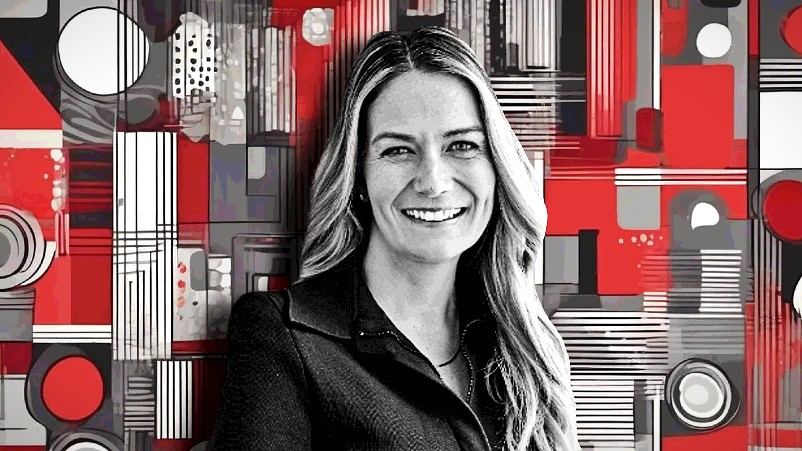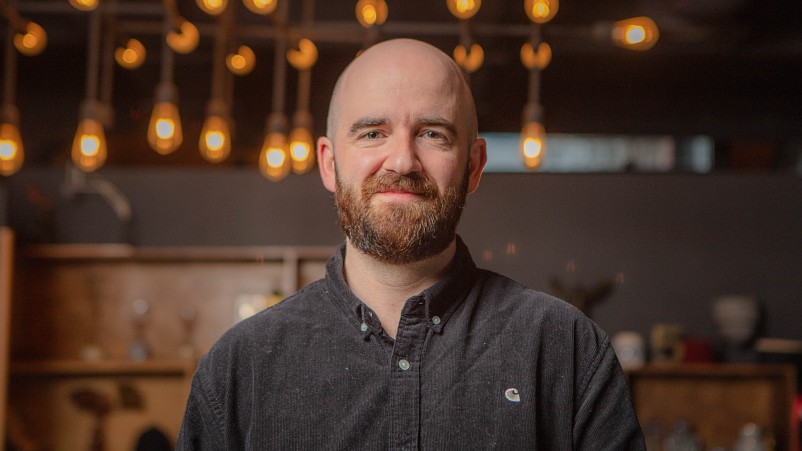Phoenix playbook: After firestorm, Seven goes to market with new approach, structure touting convergence, dialogue, answers to tough questions

Seven's new structure raised more than a few eyebrows when it landed in June, as did the big name cuts that came with it. But despite new Television and Digital divisions appearing to erect silos, national TV sales boss Katie Finney says Seven's commitment to converged trading remains unchanged. In fact, she says little has tangibly changed across the sales structure, aside from PNLs and reporting lines – intended to streamline delivery for partners. She’s in market tasked with assuring advertisers and agencies that Seven is now better set to manage shifting market dynamics. But the restructure isn't all Seven has to address, in what has been a year marred by controversies and murky allegations. Finney says the business is taking on "the good, the bad and the ugly" from partners and staffers alike, while CEO Jeff Howard is taking a zero tolerance stance on bad behaviour.
What you need to know:
- Seven West Media’s new operating model may have pulled out TV and Digital as two distinct divisions, but convergence is still very much on the agenda at the Kerry-stokes controlled media conglomerate
- New TV sales boss Katie Finney says little has changed down the chain, though new reporting lines and a separated PNL between the two divisions will help Seven double down on digital growth.
- Rather than driving a wedge, Finney says the new structure will enable greater collaboration and agility between the two teams, which will work hand-in-glove to deliver the total TV experience. The new VOZ currency and the long-awaited launch of Phoenix in Q1 2025 should also help.
- But all of that might have been obscured by the noise of the sweeping restructure, Finney concedes, with her job now being to clear things up in market via “two-way conversations” with partners.
- No mean feat, but she’s already started the process, with more formal Upfronts sessions with agency partners and their clients slated for November. The pitch will home in on Seven’s new digital AFL and Cricket rights, growth in BVOD, and TV’s longtail ROI, amongst other items.
- Finney and her colleagues have big shoes to fill, and a reputational crisis to navigate, but she’s encouraged by the opportunity Seven now has to “do things differently” and has been urging staff and clients to share “the good, the bad and the ugly”.
[The bookings] may be under two different PNLs, but they're totally line-hooked together and no different to how in an agency you may have someone buying the digital buy and someone buying the television buy – we're set up in that same way.
Despite a blockbuster restructure three months back, Seven West Media’s (SWM) new national TV sales boss, Katie Finney, insists little has changed within the Seven Network’s sales teams.
“It actually hasn’t been split out and pulled apart,” she responds to a question on where the media company’s sales structure the sales structure has landed between the new Television and Digital divisions – two of three unveiled under the new operating model, alongside SWM Western Australia.
“Our teams that have been total TV or converged such as our Seven Red team and sport sales – where we're telling selling that total TV experience – remain fully converged and reporting to me.”
The next layer down, the Television sales team, continues to sell Seven’s metro and regional space, while the Digital side will handle BVOD, reporting into Rachel Page – the former Yahoo sales exec who joined the network last May. All of that, per Finney, “remains unchanged”.
The bulk of the restructure sits upstream, she explains, with new reporting lines – Finney will report directly to Seven Television MD Angus Ross and Page to Seven Digital MD Gereurd Roberts – plus new PNLs that sit on top of each division.
In effect, that means that the BVOD revenue that sits within Total TV buys – primarily reserved for major sporting events or tentpoles – will be reported on the bottom line of Seven Digital, despite being handled by the Television team. But Finney suggested both teams are ultimately “agnostic” to where the money goes within the organisation.
Lost in translation
Ultimately, Finney says the shift was a matter of repackaging the existing sales structure to drive agility and efficiency across total TV to better equip the network for converged trading come 2025.
Though, she admits that might have been lost in all the noise as Seven made deep cuts and parted company with long-serving senior execs.
“I think the headline and how we went to market in that first comms definitely confused the market… the last three months has been a lot of explaining that and really showing the benefits of how myself working through into Angus Ross, as MD of Television, is actually making it easier to work with Seven.”
That's to say the business isn't eschewing the convergence path that the broader market is set on – it's just taking a different way around.
"Yes, the bookings are managed by a sales coordinator, a sales exec and a group sales manager. That may be under two different PNLs, but they're totally line-hooked together and no different to how in an agency you may have someone buying the digital buy and someone buying the television buy – we're set up in that same way.”
Faster not harder
Previously the director of Seven’s in-house agency 7Red, Finney became well accustomed to the legacy bottlenecks that slowed down campaign delivery – particularly when it came to total TV integrations.
“If we were working with our production teams in sport or entertainment and we needed to really work for what a client wanted or needed … We would make it happen for the client, but there was a lot of negotiation internally.”
Now, with a single reporting line through the Seven Television team – and only Ross’ approval required to greenlight sports or tentpole integrations – Finney claims the bottlenecks are gone.
At the same time, the new siloes will give the Digital team the space and resources it needs to grow BVOD revenues – for which SWM chief Jeff Howard has set a clear edict.
James Warburton’s successor wants the channel grow dollars at the same rate as viewership. That will require some hard selling: As Howard told analysts during the company’s FY2024 results briefing, BVOD minutes were up 39 per cent versus revenue growth of just 10 per cent.
With the new structure laid out, the organisation is set on growing clients across assets simultaneously. That will require having a “laser focus [on] our digital growth” all the while “ensuring that we remain also focused on our linear television clients, who in most cases are now buying a total TV view,” per Finney.
Phoenix finally rising
Selling across the two will be all the more important once the new VOZ currency lands, with Seven’s long-awaited converged trading platform Phoenix also slated for launch in the first quarter of 2025 according to Finney.
The new tech, spearheaded by former chief revenue officer Kurt Burnette before he lost his job, falls short of the 2024 deadline promised in its grand unveiling at Seven’s 2023 upfront. The delay gave way for Paramount to play catch up and claim ‘first-to-market’ for its own converged trading platform at its upfronts pitch earlier this month – but with Paramount hedging with a “January-February” ETA, the networks will likely be running neck to neck.
The key difference between the two, per Finney, will be that in place of Paramount’s SVOD offering Seven has its own regional assets, touting 91 per cent coverage of the Australian population.
Big shoes
A Seven Network veteran of 22 years, Finney stepped up in June to take on the national TV sales remit left vacant by Georgie Nichols, and Natalie Harvey before her. Nichols’ voluntary exit from the company had coincided with the bout of high-profile layoffs that made way for the new operating model and it wasn’t until several months later that she was revealed to be following her predecessor, with Harvey now Mamamia CEO, to the women’s media company.
Nichol’s departure, coupled with the sweeping redundancies that included CMO Mel Hopkins as well as Burnette and and head of sport and MD of Seven Melbourne, Lewis Martin – hot on the heels of a CEO switch earlier in the year – has left many in market wondering about how the company will make up for the lost experience and longstanding relationships.
But Nicholls, while nodding to the challenge of farewelling longtime colleagues, positions the shakeup as more of a changing of the guard.
“With change comes opportunity,” she posits. “The wonderful thing about it is there's a huge amount of IP and incredible people within the team – each of the sales directors in each of the state offices, there's been no change there. They've got brilliant relationships as do all of their teams.”
“Georgie Nichols was in the organisation until August, so we had a great handover too, which is fantastic. And I had benefited from working under Kurt for several years as well, so I was there in the conversations, a part of it, and knew a lot of our clients and agency partners really well. Certainly, there's been a lot of relationships that I'm working on and building right now – as are the team – but that’s again, more opportunity.”
She says it’s given Seven an opening to ask clients how they want to do things differently, and likewise internally with team members.
“That's been a big part of what we've done in hearing the good, the bad and the ugly – tell me, rip off the band aid."
Two-way conversation
On top of the restructure, the media company was already dealing with the fallout of damaging allegations made against its Seven Spotlight program earlier this year that led to several high-profile resignations in its news teams. Only months later a highly publicised Four Corners exposé aired allegations of a toxic workplace culture – which Seven swiftly acknowledged and stated it had addressed internally.
Meanwhile, media stocks have been punished by investors and the ad market has been hard on almost everyone bar the big platforms.
Suffice to say it's been a challenging year, forcing the company to dial down its usual hard pitch.
Finney frames the go-to-market strategy as a “two-way conversation”. She says that while the market’s response to the new structure has been wholly positive, agencies and clients have not shied away from the tough questions.
The sales team is already doing the rounds with partners, and the opportunity for a more formalised presentation at Seven's 2025 upfronts, due in November. Like most media companies, these will be lower key than previous years.
“We're going to be doing really intimate sessions with each agency partner and their clients and having that two-way conversation – talking about our strategy, where we are on the journey, where brands are showing up, and how we're already doing things differently now to what we were before July,” per Finney.
The delayed schedule is in part a response to market feedback that September and October are already jam-packed for partners, but it’ll also give Seven time to produce “some really strong findings” on the benefits of the new structure. Plus, the network will have the first tranche of audience figures from its new digital AFL and cricket rights – with the new 7plus Sport platform to boot.
“From a go-to-market piece, we're in the biggest, most exciting time that we could have been at Seven. People talk about as the biggest game changer in sports streaming [but] it's actually the biggest game changer in streaming altogether," claims Finney, "because Australians have not [previously] been able to watch the AFL and cricket from a connected TV without paying.”
There is some growth to build on, for example the first three episodes of My Kitchen Rules are up slightly (1 per cent) on the first three of 2023 in total TV terms, with BVOD up 29 per cent, or 166,000.
Seven is also likely to go hard on effectiveness and the "long term ROI" that comes with TV. Finney says the network has been "testing and learning" with brands to optimise total TV spend in the broader media plan to fuel campaign success.
But there are no doubt difficult conversations to be had and the upfronts will need to continue to address concerns around cultural issues within the business and the work internally to get Seven “where it needs to go”, per Finney.
“Jeff, our CEO, is incredible at just being transparent and honest," she says.
"Bad behaviours won't be tolerated.”



